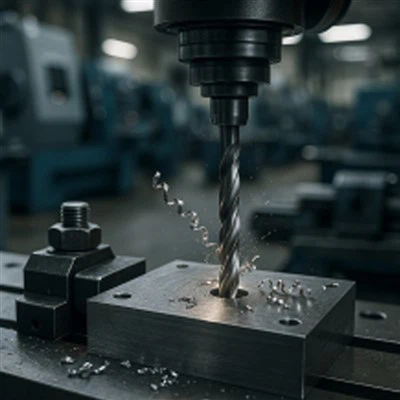Hey there! As a stamping supplier, I've been in the game for quite a while, and I've seen firsthand how speed can have a huge impact on the stamping process. In this blog post, I'm gonna break down the effects of speed on stamping, and why it matters for your business.
Let's start with the basics. Stamping is a manufacturing process that involves using a press to shape metal sheets into various parts and components. It's a widely used technique in industries like automotive, aerospace, and electronics, where precision and efficiency are key. There are different types of stamping operations, such as Metal Blanking, Metal Forming, and Metal Drawing. Each of these operations has its own unique requirements, but speed plays a crucial role in all of them.


The Good Side of High Speed Stamping
One of the most obvious benefits of high-speed stamping is increased productivity. When you crank up the speed of your stamping press, you can produce more parts in less time. This means you can meet higher production demands, reduce lead times, and ultimately increase your bottom line. For example, if you're making small metal components for a consumer electronics product, a high-speed stamping press can churn out thousands of pieces per hour, compared to a slower press that might only manage a few hundred.
Another advantage of high-speed stamping is improved consistency. Modern stamping presses are equipped with advanced control systems that can maintain a high level of precision even at high speeds. This means that each part produced is more likely to be identical to the next, reducing the need for manual inspection and rework. In industries where quality control is critical, such as medical device manufacturing, this consistency can be a game-changer.
High-speed stamping can also lead to cost savings. By producing more parts in less time, you can spread your fixed costs (like machine setup and labor) over a larger number of units. Additionally, faster production times can reduce the amount of inventory you need to hold, freeing up capital that can be used for other purposes.
The Challenges of High Speed Stamping
Of course, high-speed stamping isn't all sunshine and rainbows. There are some challenges that come with increasing the speed of your stamping process. One of the biggest issues is tool wear. When a stamping press operates at high speeds, the tools are subjected to more stress and friction, which can cause them to wear out more quickly. This means you'll need to replace your tools more frequently, which can be expensive. To mitigate this problem, you can use high-quality tool materials and implement a regular maintenance schedule.
Another challenge is the potential for part defects. At high speeds, there's a greater risk of issues like burrs, cracks, and misalignments. These defects can compromise the quality of your parts and lead to customer dissatisfaction. To minimize the risk of defects, you need to carefully control the stamping process parameters, such as the speed, pressure, and lubrication. You may also need to invest in advanced inspection equipment to catch any defects early on.
Noise and vibration are also common problems in high-speed stamping. The rapid movement of the press can generate a lot of noise, which can be a nuisance for your workers and may even pose a health risk. Excessive vibration can also affect the accuracy of the stamping process and damage the equipment. To address these issues, you can install noise-reducing enclosures and vibration dampening systems.
Finding the Right Speed
So, how do you find the right speed for your stamping process? Well, it depends on a variety of factors, including the type of stamping operation, the material being used, the complexity of the part, and the capabilities of your equipment. In general, you want to find a speed that maximizes productivity while minimizing the risk of tool wear and part defects.
One way to determine the optimal speed is to conduct a series of tests. Start by running your stamping press at a relatively low speed and gradually increase it while monitoring the quality of the parts and the performance of the tools. Look for signs of tool wear, such as increased friction or dulling of the cutting edges, and check for part defects using inspection equipment. Once you find a speed that gives you the best balance of productivity and quality, you can set it as your standard operating speed.
It's also important to note that the optimal speed may change over time. As your equipment ages or as you start using different materials or part designs, you may need to adjust the speed accordingly. Regularly reviewing and optimizing your stamping process can help you stay competitive in the market.
Conclusion
In conclusion, speed has a significant effect on stamping. While high-speed stamping offers many benefits, such as increased productivity, improved consistency, and cost savings, it also comes with some challenges, such as tool wear, part defects, and noise and vibration. By understanding these effects and taking steps to mitigate the challenges, you can find the right speed for your stamping process and achieve the best results for your business.
If you're in the market for stamping services or looking to optimize your existing stamping process, I'd love to have a chat with you. We have the expertise and experience to help you find the right solutions for your specific needs. Whether you're a small startup or a large corporation, we're committed to providing high-quality stamping services at competitive prices. So, don't hesitate to reach out and let's start a conversation about how we can work together.
References
- Smith, J. (2020). High-Speed Stamping: Benefits and Challenges. Manufacturing Today Magazine.
- Johnson, A. (2019). Optimizing Stamping Speed for Maximum Productivity. Industrial Engineering Journal.
- Brown, R. (2018). The Impact of Speed on Stamping Tool Life. Tooling Technology Review.






